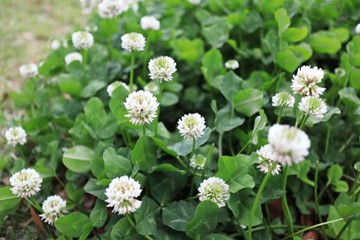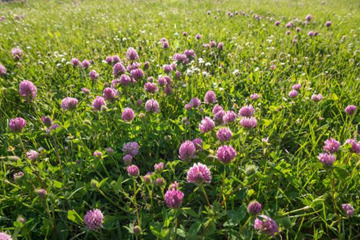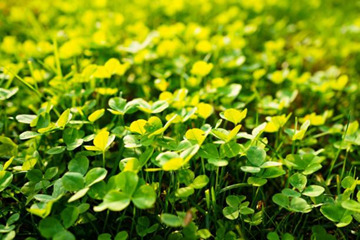Author: Clavel Guzman, Laramie County Master Gardener Trainee
Clover lawns are slowly growing in popularity due to their low maintenance habit, as well as their ability to be lush and green compared to normal grass lawns. However, is it a good option for Wyoming residents to have clover lawns? Will clover lawns be successful for Wyoming residents? Here are some pros, cons, and other facts to help you decide the best option for your lawn.
Pros
- Mowing lawn less.
- Most clover hardy to Zone 3.
- Requires less water and less fertilization.
- Can make grass healthier.
- Don’t need herbicides or pesticides.
- Helps with erosion control.
- Attracts helpful insects.
- Drought tolerant.
- Pet friendly (resistant to dog urine).
- Great support with fruit and vegetable gardens.
- Eco-friendly compared to traditional grass lawns.
- Improves soil due to the nitrogen.
- Crowds out weeds.
Cons
- Reseeding sooner as a perennial *Only-clover lawns need to be reseeded every 2 to 3 years; if mixed with grass lawns, it does not need to be reseeded.
- Stains clothes easier than grass.
- Roots creep over edging and can enter into unwanted areas.
- If you overseed, the lawn can look patchy, lumpy or uneven.
- During dry spells, will need more water than usual.
- If clover gets infected with fungus. it is toxic to horses.
- Weed killers will kill clovers.
Types of Clover

White clover (trifolium reopens):
This type of clover can be in a full sun or partial sun location, and it will spread quickly and rapidly. It does well with poor soil and outcompetes weeds. Can pair with Red Clover, Kentucky bluegrass, Bermudagrass, red fescue or hard fescue. This clover produces white flowers that are great for pollinators, such as honeybees and butterflies. Can vary in height between 4 to 8 inches.

Red Clover (trifolium pratense):
Red clover likes to be planted in either full sun or partial shade. This type of clover produces flowers that bloom a reddish-purple and have natural medicinal properties. The flower has a honey-like scent and is edible. This clover can grow taller ranging 6 to 24 inches in height. This pairs well with White Clover, Ryegrass, or tall fescue.

Microclover (trifolium repents var. “Pirouette” and “Pipolina”):
This clover is the most popular with clover lawns because there are smaller leaves and fewer flowers. While this clover can be planted in partial sunlight, it will grow the best in full sunlight. This clover only grows 4 to 6 inches in height. It is also less prone to clumping than White clover which does help integrate with other grasses. May be paired with Kentucky bluegrass or tall fescue.
Planting
After deciding which type is best for your lawn it’s time to start planting the seeds. The best time to plant any of these clover types is early spring around mid-March to mid-April or when temperatures will stay above 40 degrees F.
To start preparing soil, lightly rake the lawn. Seeding depth should be 1/8- to 1⁄4-inch deep. For the amount of seeds, it will be about 6 to 8 oz of seed per 1,000 square feet.
After sowing your seeds, water the soil lightly and mist until clovers take root. No fertilization is needed at the time of planting or the time it takes for seeds to show up. It will take about 2 weeks to germinate, water daily until you see leaves, reduce watering to about twice a week.
Summary
Are clover lawns a good option for Wyoming residents and will they be successful? Yes, clover lawns are a good option and successful for Wyoming residents. They will hold up in Wyoming’s climate. They are a great low management lawn with lush results.
Additional Resources
- Forage Identification: White Clover, University of Wyoming Department of Plant Sciences, https://www.uwyo.edu/plantsciences/uwplant/forages/legume/white-clover.html
- Forage Identification: Red Clover, University of Wyoming Department of Plant Sciences, https://www.uwyo.edu/plantsciences/uwplant/forages/legume/white-clover.html
- “Should You Move Over to Clover?,” Tony Koski, PhD, Colorado State University Extension Turfgrass Specialist, available for download from https://cmg.extension.colostate.edu/wp-content/uploads/sites/59/2021/02/Should-you-move-over-to-clover_Koski_2020.pdf
